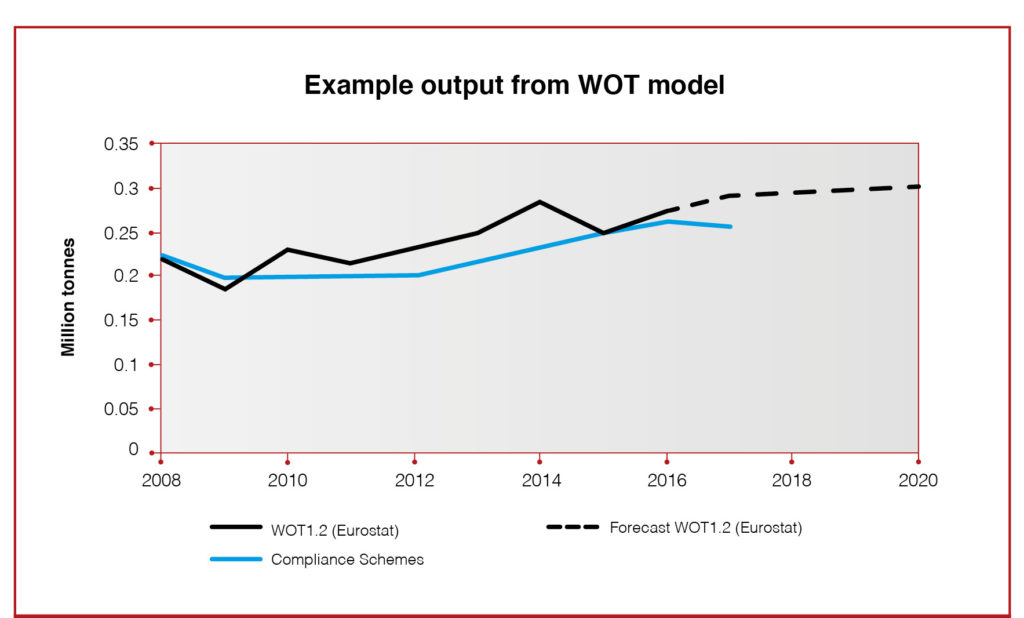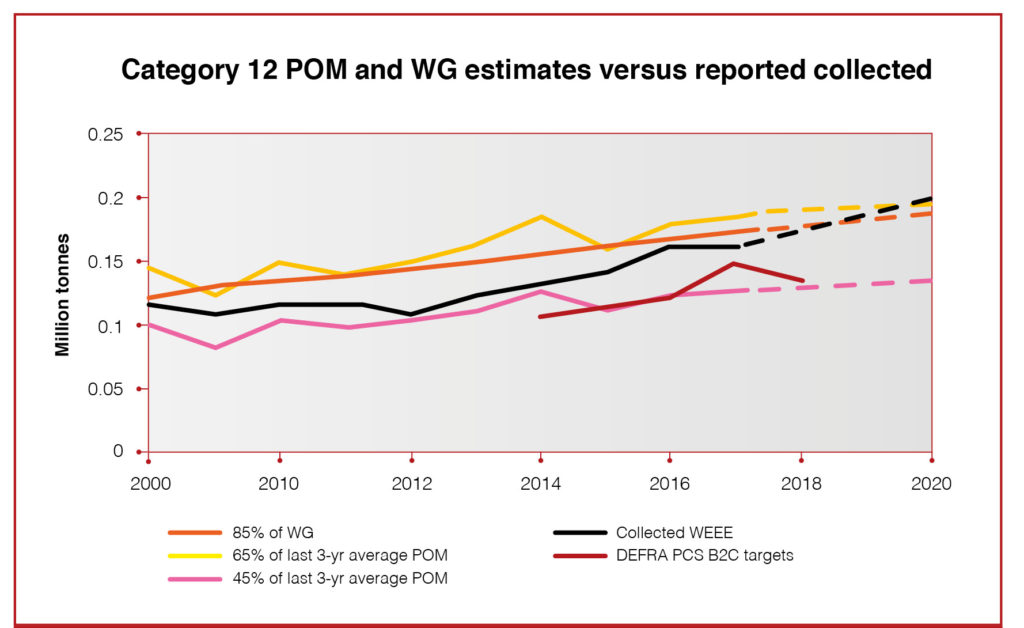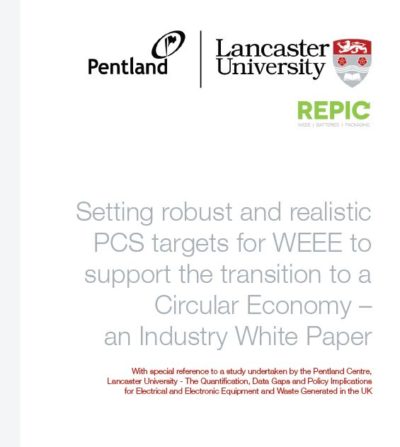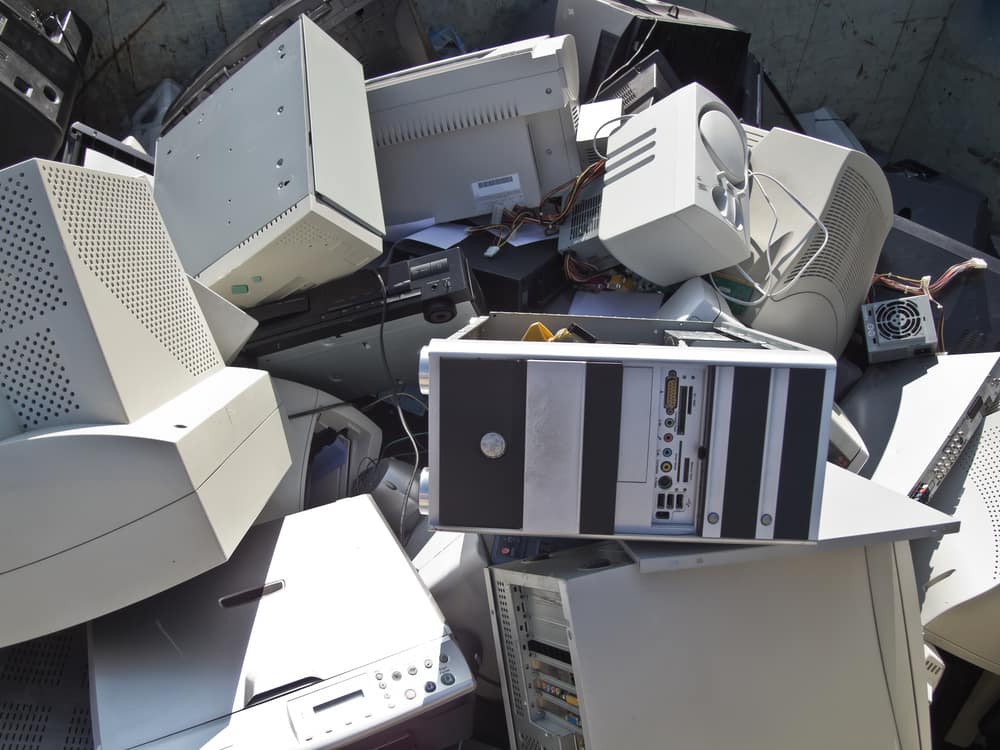WEEE compliance scheme Repic has today (21 September) published a new way for calculating the target setting for the collection of waste electrical and electronic equipment in the UK.
The possible approach has been produced by the Pentland Centre of Sustainability in Business at Lancaster University, which was commissioned by Repic.
The document is expected to be viewed with interest by government and the WEEE sector, with collection targets for WEEE missed by 16% in 2017.
WOT
The report released today (September21) calls for a change to a ‘Waste Over Time (WOT) model’, which is used by the European Union to estimate electrical products placed on the market and also WEEE Generated (WG).
Writing in the foreword, Mark Burrows-Smith, chief executive of Repic, explained that many factors of the ‘lifecycle of products’ need to be understood for appropriate targets to be set.
“EPR [extended producer responsibility], either through voluntary codes or statutory regulations, requires a fundamental understanding of the economic life-cycle and value of the products it applies to. We only have history as a guide, but to set meaningful targets that apply to the correct route a post-consumer product takes, requires an understanding of forecasting and is very important for policy delivery.”
Trade data
The model suggested in the report uses trade data available from the Eurostat database since 1995 alongside an algorithm which calculates EEE placed on the market and WEEE generated against the categories in the WEEE Directive (changing from 10 to 6).
The calculation is where EEE placed on the market = total domestic production + imports – exports of electrical goods.
Lancaster University has made “enhancements” to the model to make it suitable for the UK dynamic, including converting the output into the 14 UK categories.
The suggested new approach would mark a shift away from the current system which sets targets based on trends of new products placed on the market over the previous five years.
Throughout the report, it is claimed that the current method fails to take into account a range of factors which will impact material available to compliance schemes. It was said that by moving to the WOT method, a more accurate picture of WEEE generated and WEEE placed on the market (POM) can be achieved, and therefore more accurate targets can be set.
And, Repic says the report highlights that the current target setting methodology does not take into account a range of soci-economic factors, which will impact the WEEE available for PCS to collect.
Accuracy
As seen in the table below, which compares cooling appliances reported as placed on the market with estimates from the WOT model, the documents says the gap in EEE placed on the market in the WOT model and the figure reported by compliance schemes, points to possible ‘free riders’, exempt producers, and second-hand trade, “which is captured in the WOT calculations but is absent in the EA placed on market figures”. This demonstrates the requirement for further work to be undertaken on the WOT model as it currently stands, to ensure it is suitable for application of the UK dynamic and future target setting.

Estimates for UK Category 12 POM from the WOT model plotted against the EEE POM figures reported by PCSs. Sources WOT 1.2, Environment Agency
Against current targets
The report explained that in 2019, the UK WEEE collection targets will increase to either 65% of electrical products Placed On the Market (POM) or 85% of WEEE generated.
Currently, the UK WEEE Regulations set household WEEE collection targets for Producer Compliance Schemes (PCS), with the overall UK target being met by the inclusion of substantiated estimates of WEEE collected through legitimate routes outside the official WEEE system.
According to the report, “in recent years there have been fluctuations in the amount of EEE POM and the amount of WEEE subsequently reported in the official system. This was most notable in 2017 when EEE POM declined and the PCS targets were not met for the first time.”

WEEE collection targets for the UK according to Article 7.1 of the WEEE Directive, derived using the WOT model and projected on UK Category 12. The corresponding official WEEE collected figures as well as the 2014-2018 PCS targets are plotted for reference. Sources WOT1.2, Environment Agency, Defra
Improvements
The report added that improvements to current WEEE targets would be achieved through the reduction of the uncertainties in the unreported WEEE flows in each UK category, enabled by the “scientifically sound data analysis and modelling algorithms”.

The report is in its first stage, with an application being made for further funding as part of the WEEE Fund
“Further work to more accurately quantify the unreported flows by category should help design adequate mechanisms to redirect undesirable WEEE leakage,” it added.
The report is in its first stage, and researchers have applied for funding through the £8 million WEEE fund to continue the work further.
The findings are available at www.dynamicweeemodel.co.uk, which also has videos around the topic involving stakeholder and Repic and Lancaster Universtiy teams regarding the research and challenges faced.
Commenting on the research, Mark Burrows Smith, Chief Executive of REPIC said:
“There’s a clear knowledge gap. Improvements in data need to be addressed before we can effectively develop a model that will help inform future government waste policy and industry decision making. The targets for the whole of the UK will increase considerably in 2019.”
Defra
Responding to the Lancaster University research at a round table held with Repic, senior Defra WEEE official Graeme Vickery, said: “Certainly in the context of WEEE the setting of targets is a key feature of the regime, I think it’s important that we set a target which is ambitious but also needs to be achievable for producers and compliance schemes to actually meet.”
The post REPIC publishes WEEE target method research appeared first on letsrecycle.com.
Source: letsrecycle.com General




